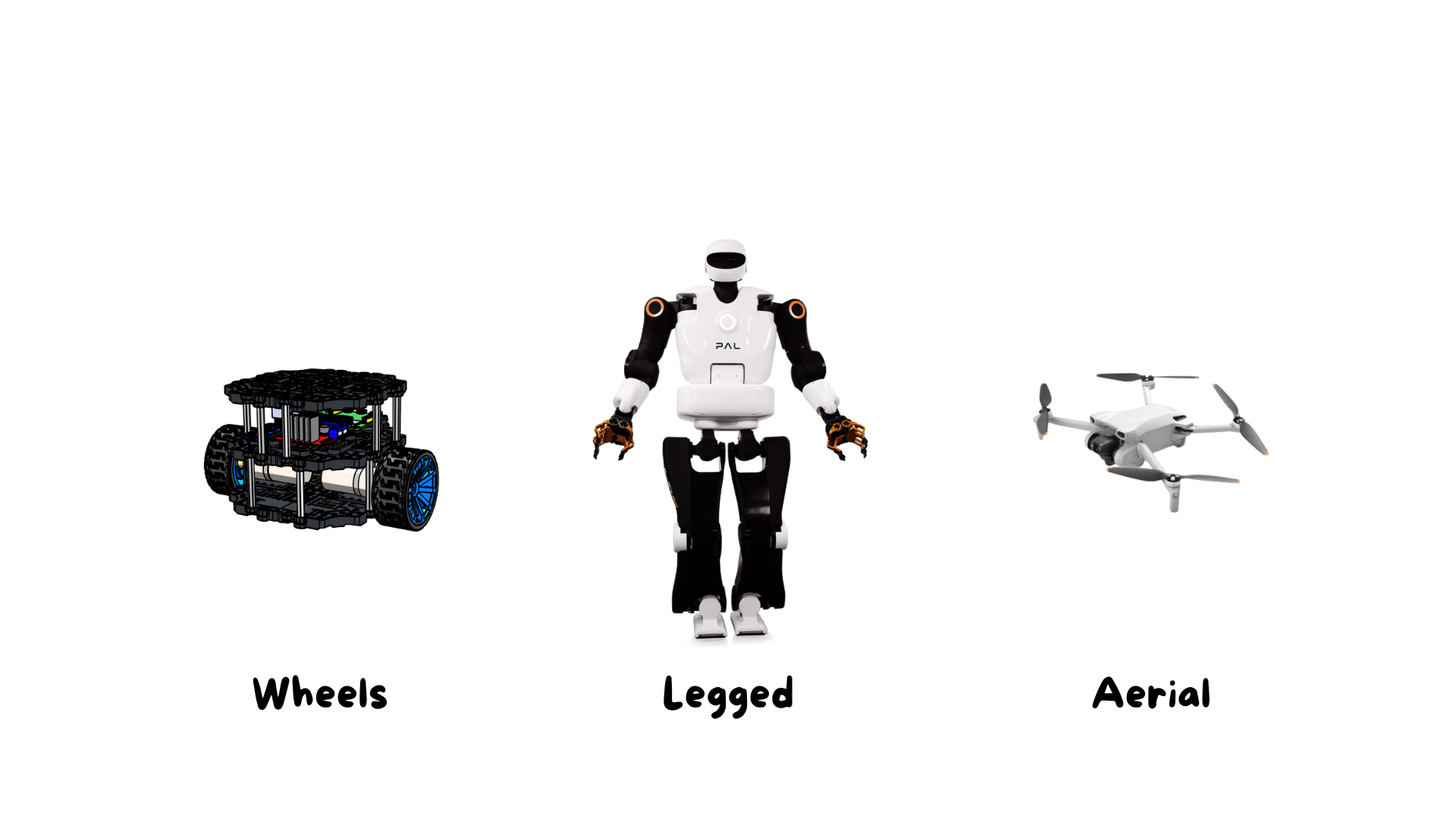
Whether it’s a four-legged robot climbing rocky hills or a drone hovering over a building site, locomotion is what gives mobile robots the power to explore, navigate, and interact with the world.
But what makes one locomotion system better than another? Is there a perfect design? The answer is more nuanced than you might think.
To be considered mobile, a robot must have a mechanism that allows it to exchange forces with the environment—to push, pull, rotate, or slide across surfaces. This mechanism is known as its locomotion system.
Choosing the right locomotion system is a crucial design decision. Each type has strengths and weaknesses, and no single solution is ideal for every environment.
There is no universally “best” locomotion method—only those better suited to specific tasks and terrains.

Fortunately, roboticists don’t have to start from scratch. Nature has already provided incredible templates for movement. Humans, animals, birds, insects, and fish have evolved highly efficient and adaptive locomotion strategies over millions of years.
Drawing inspiration from these systems has given rise to a fascinating field: bio-inspired robotics.
Legged robots—often modeled after humans or quadrupeds—offer excellent flexibility. They can move across structured environments like buildings and unstructured ones like rubble, forests, or stairs.
This type of locomotion enables:
Walking and climbing
Jumping and running
Balancing on uneven or soft terrain
But these advantages come at a cost: high mechanical and computational complexity. Precise actuation, real-time sensing, and control algorithms are critical to making them work effectively.
On the other end of the spectrum, we have wheeled locomotion—a system not found in nature. You won’t see an animal rolling on wheels, and that’s because wheels are a purely human invention.
Despite that, they’ve revolutionized mobility.
<!– Image 3: “Wheeled Robot Motion Mechanics” – diagram of wheeled robot with motion arrows, placed here –>
Wheels are:
Mechanically simple
Energy-efficient
Perfect for smooth, flat, man-made environments (roads, factories, homes)
That’s why cars, trains, and shopping carts all rely on wheels.
However, once you move off-road or onto soft or uneven terrain, wheels lose their efficiency dramatically.
Lastly, we can’t ignore the fast-growing field of aerial robotics, especially drones.
Flying systems operate in three-dimensional space, which gives them unmatched mobility. However, they come with unique challenges:
Limited battery life
Payload restrictions
High control complexity
In robotics, context is everything. Understanding the environment and mission of your robot will help you select the most appropriate locomotion system.
From bio-inspired legs to human-invented wheels to sky-soaring drones, today’s robots are limited only by our creativity—and the laws of physics.
Assemble your robot and get started to learn Robotics!